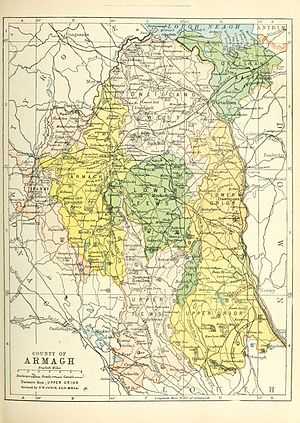Scotch Street
| Scotch Street | |
| Irish: Sráid na nAlbanach | |
 Scotch Street |
|
| Population | 1,000 estimate |
|---|---|
| Irish grid reference | 970 551 H 970 551 |
| District | Craigavon |
| County | County Armagh |
| Country | Northern Ireland |
| Sovereign state | United Kingdom |
| Post town | CRAIGAVON |
| Postcode district | BT62 |
| Dialling code | 028 |
| EU Parliament | Northern Ireland |
| UK Parliament | Upper Bann |
| NI Assembly | Upper Bann |
|
|
Coordinates: 54°26′26″N 6°30′31″W / 54.44050°N 6.50871°W
Scotch Street is a village in County Armagh, Northern Ireland. It is within the townland of Timakeel (from the Irish Tigh Mhic Caoil) and part of the Craigavon Borough Council area. In the 2001 Census it had a population of 120 people. Currently there is estimated to be around 1000 people living there.
Within the village there is a Post Office, Gospel Hall, Primary School and a Filling Station/Mace shop. There were recent additions to the village when outlets for five new shops were built. Moved in were; a chip shop, hair salon and a butcher. Since then the butcher has been very successful becoming one of the most popular around County Armagh.
Richmount Primary School has grown in numbers since the building of new estates on either side of Scotch Street.
Scotch Street is mainly a unionist area, with a majority population of Protestants living in the area. There has been an increasing number of foreign nationals who also live in the area.
Due to the high increase in population over recent years there was a lack of facilities and events for the young people in the village to use/attend. This was a problem and occasionally led to disturbances to the local community. As a result, the DUP played a part in fighting for a Multi-Use Games Area, (MUGA), which was built for the young people to play games at. This was a great achievement for the village.
The village is the only significant settlement between the large town of Portadown in County Armagh and the village of Moy in County Tyrone. Rapid growth in the population of the settlement has came about with the development of many new housing estates including Keelmount Grange and Timakeel Close.
References
See also
- List of villages in Northern Ireland
- List of towns in Northern Ireland
| ||||||||||||||||||||||||||||||
